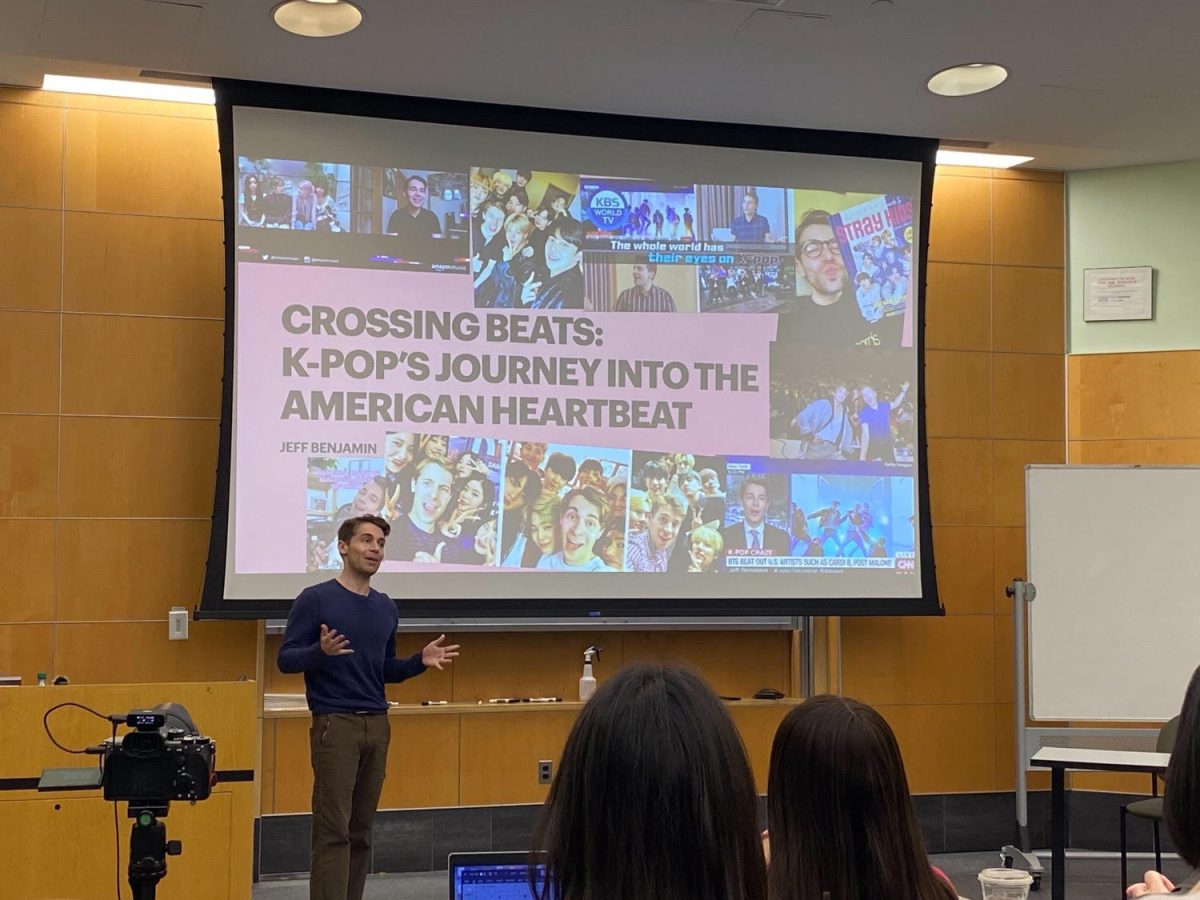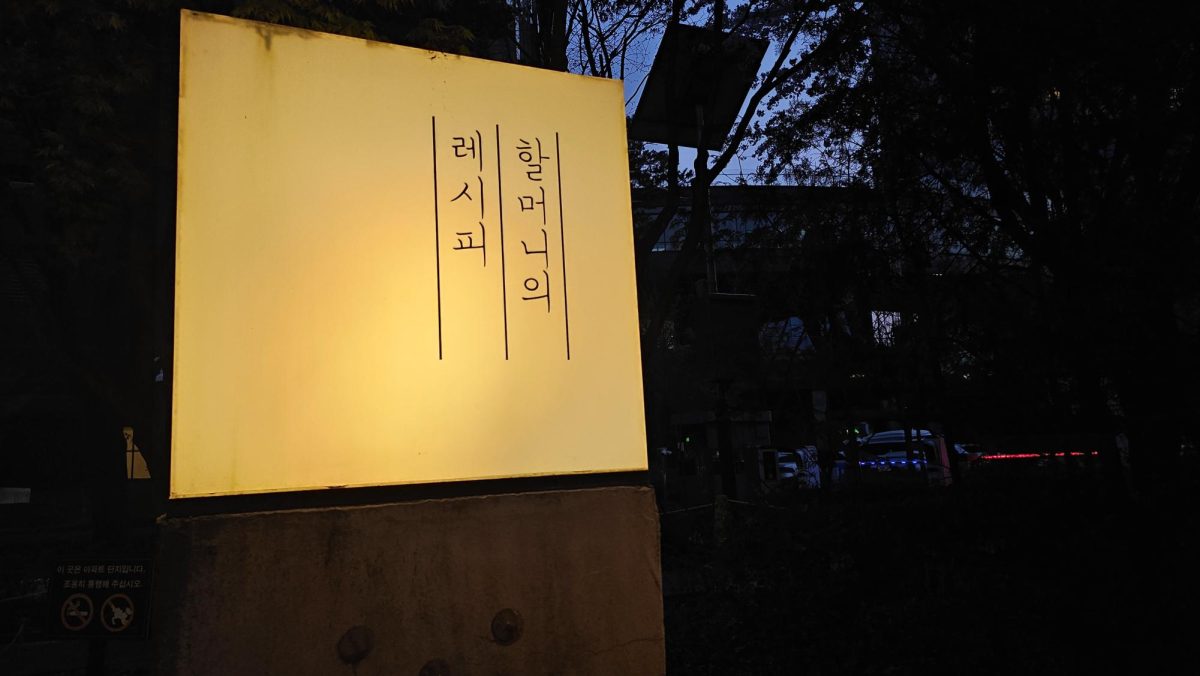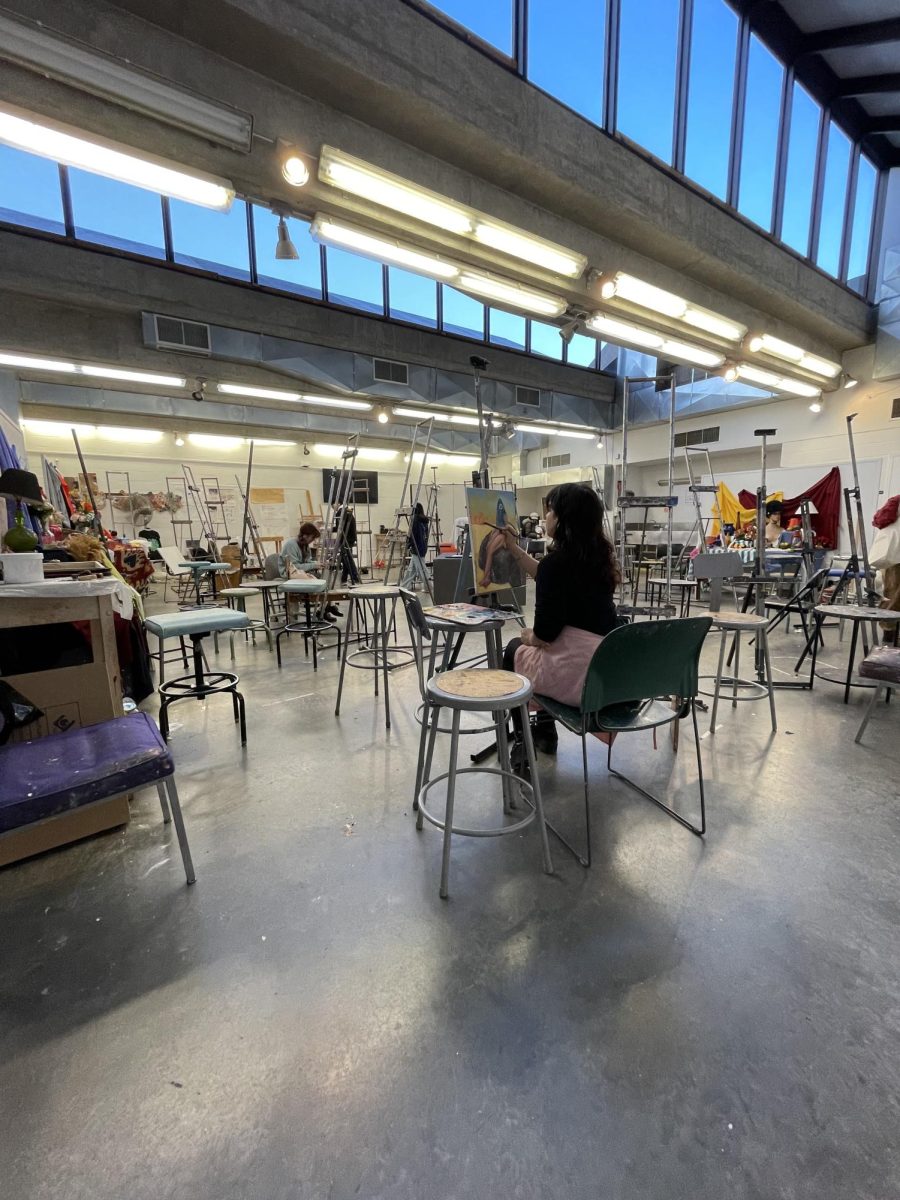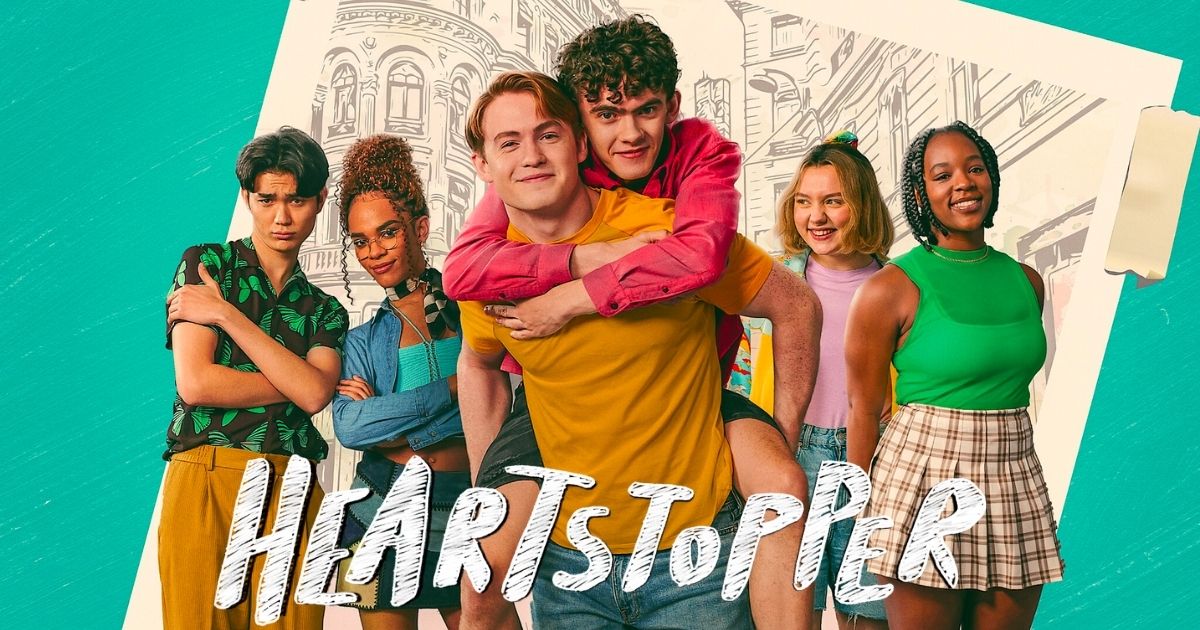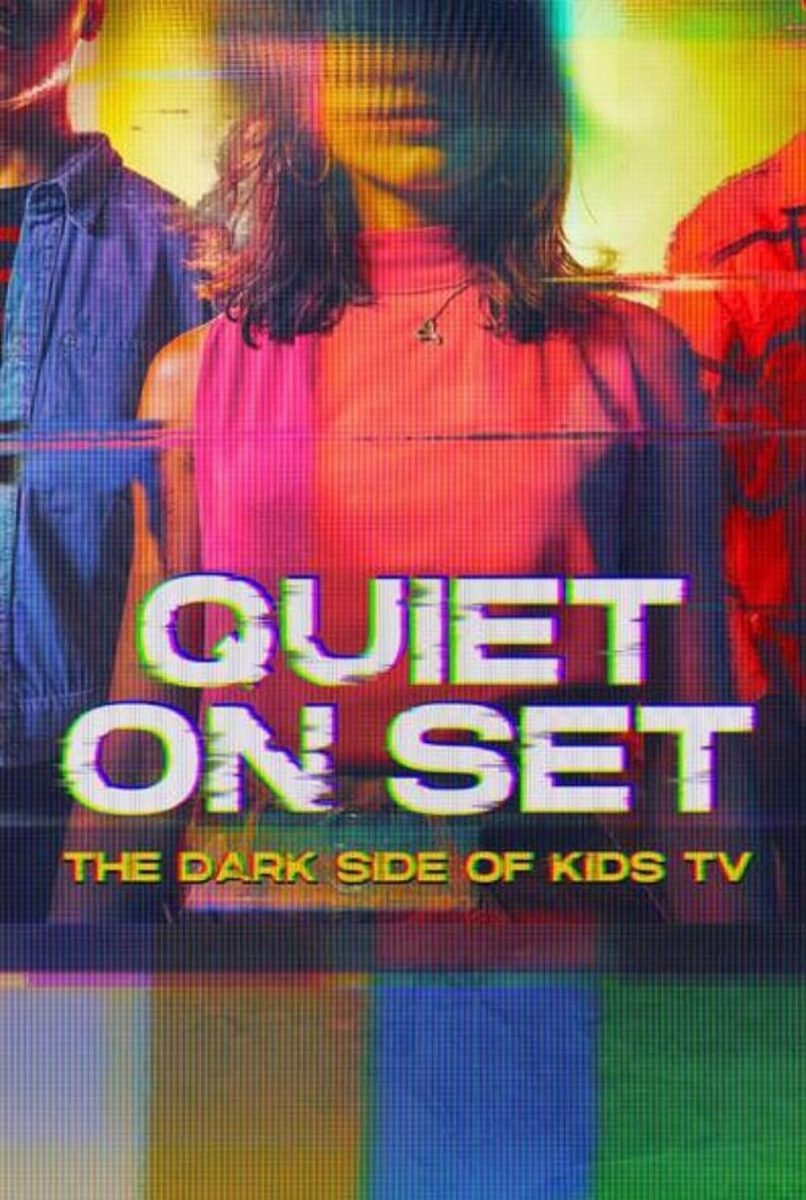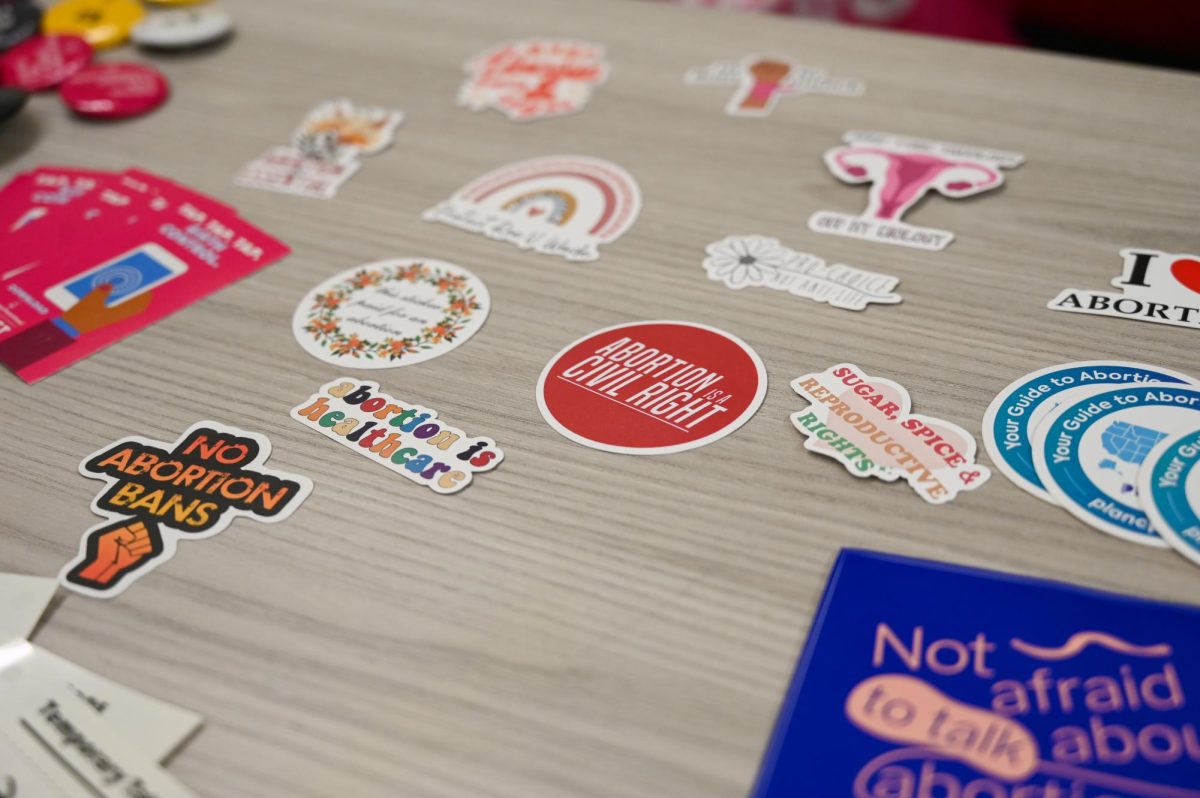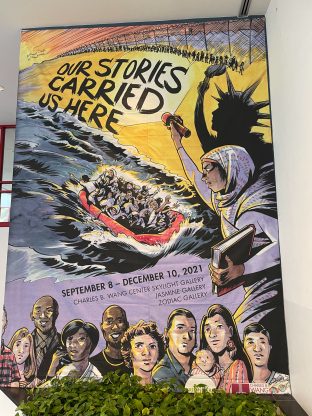
Anyone who has visited the Charles B. Wang Center since the beginning of the fall semester has probably seen passing students slow down or stop completely to take in head-turning walls of illustrated graphic panels about the intricacies of the immigration process and refugee experience.
Challenging scenes of race, religion, class, racial profiling, education inequality, systematic displacement and discrimination, mental health, disability, activism and more are boldly depicted everywhere, from beside Jasmine Food Court to opposite classrooms and bathrooms. Luckily, students and the creators of the graphic novel from which these scenes are taken can work together as viewers and storytellers to reclaim narratives from the moments of xenophobia that often plague immigrants and refugees.
On Sept. 8, the exhibition opening reception for “Our Stories Carried Us Here” finally arrived, bringing with it context and wisdom from immigrant speakers, as well as a heartening message about retaining one’s roots amid success and the power of art to influence the trajectory of the world.
With a discussion and Q&A led by Prof. E.K. Tan, chair of the Department of Asian and Asian American Studies and associate professor of English, panelists filed into the Wang Center Theater on a refreshingly sunny, late Wednesday afternoon after sporadic days of rain to discuss what has been described as a bold and unconventional collection of first-person stories, written and illustrated by immigrants and refugees living across the United States.
The distinction between these two frequently misconstrued terms becomes clear; immigrants typically seek out family or economic prospects, while refugees are forced from their home countries due to persecution, war or natural disasters. Within the graphic novel, the narrators describe their personal journeys from their home countries, with a vibrant array of backgrounds ranging from a Stanford scientist to an indigenous activist to a deaf student and more.
The graphic novel and exhibition, located within the Wang Center from Sept. 8 to Dec. 10, contains the work of Zaynab Abdi, Aziz Kamal, Craig Moodie, Karelin, Ruth Mekoulom, Alex Tsipenyuk, Zurya Anjum, Sergio Cenoch and Mary Anne Quiroz, Vy Luong and Amara Solomon Kamara — 11 immigrants and refugees from Chad, Guatemala, Jamaica, Kazakhstan, Liberia, Mexico, Myanmar (Rohingya), Pakistan, Philippines, Vietnam and Yemen living across the United States.
The panelists included co-author Zaynab Abdi, illustrator Ashraf El-Attar, co-editor Julie Vang and Tea Rozman, the executive director of the nonprofit Green Card Voices and co-editor of “Our Stories Carried Us Here.”
“You probably have heard of the book ‘March,’ autobiography of John Lewis, that won the National Book Award in the graphic novel genre and really gained prominence and respect as being a really well-received piece of literature,” Rozman said. “But how do we go about doing this, being really intentional about immigrants?”
A video highlighted the contributors who were not present, as well as word clouds which people associated with the terms “immigrant” and “refugee” before and after reading the novel, demonstrating increased empathy by using descriptive words more understanding of the struggle and survival as well as the beauty of immigrant and refugee lives.
Co-author Zaynab Abdi has an extensive background in social justice and advocacy. As a youth advocate for girls’ education, Abdi works alongside the youngest ever Nobel Peace Prize winner, Malala Yousafzai, and has spoken at the United Nations several times, with her story featured in Malala’s book “We Are Displaced.”
However, she maintains a balance between her early success and appreciating her origins as a refugee as Abdi describes her early experiences in grade school as “the United Nations [in high school]…Even to see the diversity within my own culture, so I’m Somalian Yemeni, so seeing different traditionally Somalian women, that was eye-opening.”
Despite assumptions that the lives of immigrants and refugees are plagued with struggle and discrimination, as well as persistent media stereotypes about women in the Middle East, Abdi deeply appreciates her background and at-times turbulent journey through life.
“When we think about successful stories or images, people forget about the past and where they came from and I really wanted to highlight that because I am who I am because of my past…because when we talk about immigrants…there’s all this sympathy, but not understanding that our stories are more than just struggles,” Abdi reflected.
Tan directed the discussion toward Abdi’s experiences in high school, which departed from timeworn notions about the immigrant kid who struggles a lot “because they don’t fit in and are bullied.” Despite beginning again in high school in the United States, Abdi remarked on the unique nature of a school that served majority immigrant and refugee students.
“People expect from immigrants to just shut up and be grateful of the bare minimum,” Abdi said. “Yes, we are very thankful of being in a safe place, but that doesn’t stop us from gaining our voice and speaking up and changing the system…we are the center of this, so we are going to make sure our voices will be heard.”
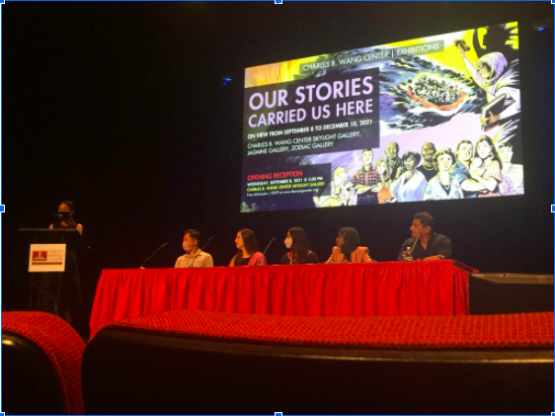
The origins of the project “Our Stories Carried Us Here” began during quarantine when Ashraf El-Attar, an illustrator from Egypt currently residing in Washington D.C., began working with Abdi. For him, the graphic novel became not just a project, but a responsibility, due to their shared cultural ties to the Middle East and his belief in the importance of Abdi’s story for positive representation in literature.
“It’s an example for everybody, not only immigrants or non-immigrants, it’s a story of life,” Abdi said.
The discussion shifted to the topic of justice, and the role of art behind today’s most pertinent social justice issues. El-Attar noted the impact of the photograph, “Napalm Girl,” in exposing the injustices of the Vietnam War to American society, as well as the globalization of protest in inciting Egyptians, who El-Attar believes to be peaceful people and “the last people that will protest,” but who nevertheless were deeply affected by “a Brazilian caricaturist with interest in Egypt.”
“Art crosses boundaries, it crosses barriers, it allows us to connect and is a democratizing tool that you don’t need language to accept,” Tan said.
Abdi hopes to continue her advocacy for immigrants and girls, though questions whether enough change has occurred underneath the UN’s bureaucracy, which she describes as lethargic.
“Changing that development work is one of the ways of achieving justice,” Abdi said. “How can we work with local people who have been in the front lines for decades?”
The importance of allowing native residents of other countries to make significant decisions to achieve their own desires and needs becomes essential in achieving effective and humane change.
As for Green Card Voices, a Minneapolis based nonprofit connecting immigrants and communities through storytelling, Rozman described their passion for educators who assign required books and support for education systems that guide people toward greater understanding of the world.
“We use what we call mirror and the window principle, where we in a way provide a window to an audience that’s not an immigrant to have a chance to understand complex stories of immigrants and refugees, authentically told, and at the same time a mirror, which means that there’s more representation among the books for all the immigrant and refugee students and readers, so that they can see themselves and their experiences reflected in the books,” Rozman said.
The importance of representation in media has been extensively documented, and panelists emphasized the growing cultural shift against systematic oppression using intentional and authentic storytelling. Education is central to Green Card Voices’ mission, from the nonprofit’s approach to young generations through co-created books like “Our Stories Carried Us Here” to collaborating with teachers through multimedia education and book sales.
The panelists answered questions from two educators in the audience, sharing that 75% of all book sales have gone to high schools and libraries, including the Green Card Youth Voices Series, and describing educator feedback about the graphic novel form’s popularity with reluctant young readers and English learners. As guests milled about the reception, glancing through copies of the graphic novel, it seemed as if the stories that carried the creators here would also carry us away.
Copies of “Our Stories Carried Us Here: A Graphic Novel Anthology” are available at the Shop Red West bookstore and online.







